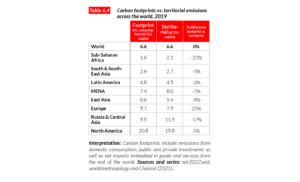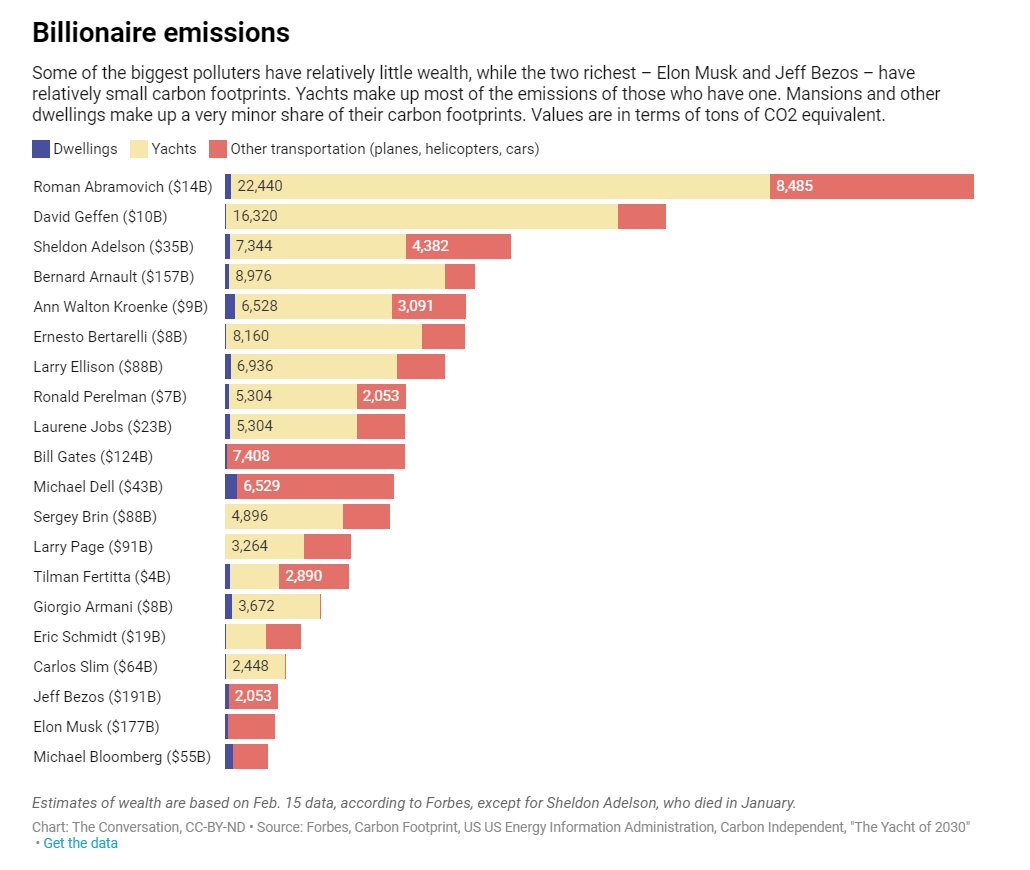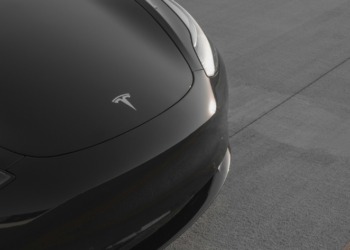Do the wealthy have a larger carbon footprint? How do billionaire contribute to climate change? The answer is more complex than that but with data at hand, we can look at who has the largest carbon footprint and why.
According to data compiled by the World Inequality Lab, not everybody can evade the responsibility of their carbon footprint despite how hard they try.
Pulling research from the World Inequality Lab and Oxfam, Bloomberg Magazine gathers evidence of the startling carbon inequality across the globe that continues to plague the world’s fight to reduce carbon emissions and fight climate change.
What did the data show?
Research collected through an alternative assessment by the World Inequality Lab (WIL), led by the Paris School of Economics and University at California at Berkeley, compared consumer income to gross domestic products. The researchers found plenty of evidence that suggests personal wealth correlates more than national wealth when it comes to carbon emissions.
WIL researchers compared a variety of factors when considering an individual’s wealth to personal carbon output including diet, car ownership, stock market investments and global trade.
They found that the top 10% of polluters — about 770 million persons — are the climate equivalent of the world’s wealthiest decile responsible for roughly 50% of all emissions — the bottom 50% making up only 12% of the total emissions.
Furthermore, the richest 1% — more than 60 million people making more than $109,000 a year — are responsible for the fastest-growing source of carbon emissions.
The report found that these inequalities aren’t just comparing rich vs poor countries’ carbon inequality, but shows that many of these high emitters can still be from low to middle-income countries as well as high-income countries.
Figures from the WIL compared the carbon footprint of countries poorest 50%, the middle 40% and richest 10% to locate where the majority of emissions come from.
In East Asia, the poorest 50% emit roughly 3 tonnes per annum, the middle 40% nearly emit 8 tonnes per annum and the richest 10% emitting an overwhelming 40 tonnes per annum — the largest amount of carbon emissions coming from the richest and smallest portion of persons in the country.
Similar to East Asia, the United States’ poorest and richest follow the same trend: the bottom 50% emitting fewer than 10 tonnes, the middle 40% emitting around 22 tonnes and the richest 10% emitting over 70 tonnes of carbon dioxide.
Data compiled by the WIL comparing America’s poorest and richest to Europe’s poorest and richest also found that Europe’s middle 40% emits fewer carbon emissions than America’s bottom 50% despite being twice as poor: Europe’s bottom 50% emitting 5 tonnes, the middle 40% emitting 10.5 tonnes and the top 10% emitting 30 tonnes.
In short, the biggest emitter is America.

Russian Oligarch emits overwhelming amount of emissions
Coinciding with the WIL report, data gathered by Forbes Magazine compared the Top 20 Polluting Billionaires and most importantly what is driving such high emissions.
The data found that the highest polluting billionaire was Russian oligarch Roman Abramovich, with the majority of his carbon emission — 22,440 tonnes — coming from superyachts.
Despite being the highest polluter of carbon emissions, Abramovich is overwhelming less wealthy than the majority of polluters on the list with the world’s wealthiest man, however what is Elon Musk’s carbon footprint? In the table above we see that he ranks the 2nd lowest polluter within Billionaire. This data suggest high carbon emissions have to do more with lifestyle rather than how rich one is.
According to the chart, superyachts are the biggest polluter of emissions. The reason for such high yacht emissions could be linked to the growth of billionaire wealth during the pandemic — and as a result — the growth of the yacht industry.
A study released by Oxfam in January of 2022 titled Profiting From Pain, found that the top 10 richest men in the world doubled their fortunes during the pandemic. Corresponding to the increase in wealth, the yacht industry also increased their fortunes in 2021 with 887 superyachts being sold — an increase of 75% more yachts than the previous year.
The superyacht produces an overwhelming amount of carbon emissions, environmentalists claiming an average superyacht produces 1,500 more carbon emissions than a typical family car.
According to Luxurylaunches, it comes as no surprise Abramovich is at the top of the list as he owns two of the biggest superyachts in the world.
WIL’s research suggest responsibility falls on billionaires
WIL researchers conclude that in order to make a significant difference in cutting carbon emissions, the U.S.’s top emitters would have to cut pollution by 87% by 2030 while the bottom half could actually increase their carbon output by 3% — suggesting again that the majority of emissions come from the wealthiest few.
The data even mentions that if the U.S. counted the emissions of only the bottom half of its earners, they would already be on track to limit global temperatures by 1.5 degrees Celsius — the goal set by the 2015 Paris Climate Agreement.
One of the easiest — at least most reasonable — ways for the rich to cut down on emission is by cutting down on forms of transportation including superyachts and private jets.
Alongside superyachts, private jets are one of the highest air polluters.
According to Bloomberg, “One-tenth of all flights departing from France in 2019 were on private aircrafts. In just four hours, those individually-owned planes generate as much carbon as an average person in the European Union emits all year.”
Shifting focus to the average individual, owning an SUV car is one of the largest emitting cars a person can own — cars in general the largest emitters of an average individuals life.
In São Paulo, two-thirds of the poorest 10% of men walk or bike to work, emitting no carbon — confirming that one the easiest ways for individuals to lower their emissions is by giving up the luxury of fast transportation.
Clearly giving up cars for the average individual is quite unrealistic as many people don’t live near or close enough to cities, yet WIL’s report suggests the most luxurious items used by billionaires are an easy way to cut carbon emissions — if the world’s wealthiest are brave enough to give up such comfortable, yet unnecessary luxuries.
Editor’s Note: The opinions expressed here by Impakter.com columnists are their own, not those of Impakter.com. — In the Featured Photo: Picture of a super-yacht taken on June 2, 2022. Source: Mussi Katz, Flickr.











